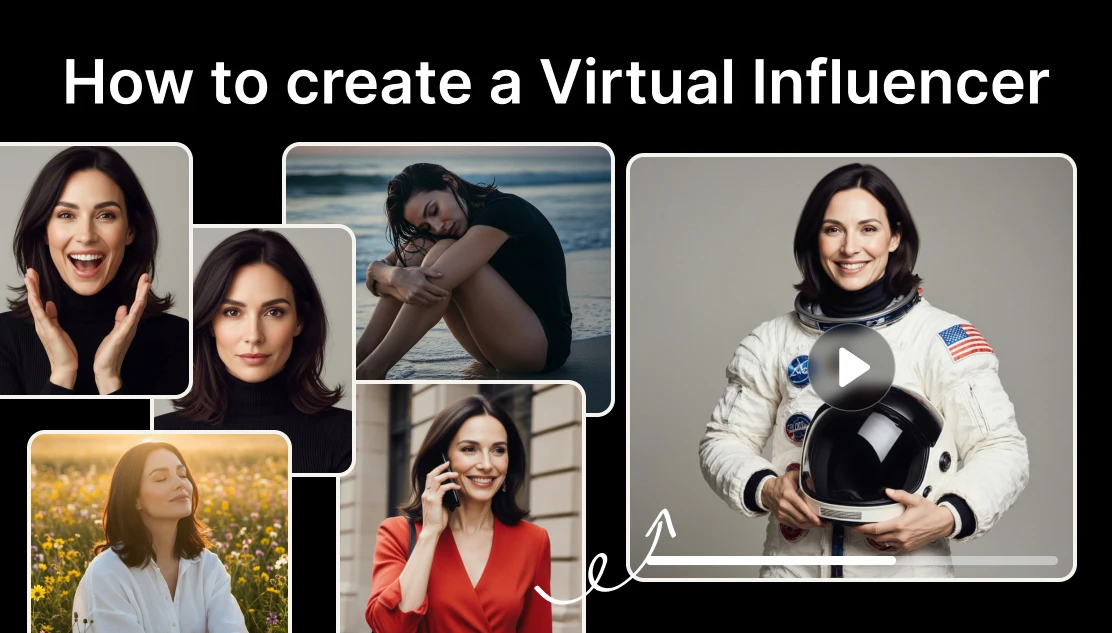In this tutorial, we’ll create a female character in Artificial Studio, no external tools needed!, using Create Image, generate consistent photographs with Nano Banana to build a dataset, train a character model, and finally bring our virtual influencer to life by animating her with the Animate Photo tool.
Step 1: Generate your dataset with Nano Banana.
Every influencer starts with an identity. In this step, we’ll create a female character and then build consistent photographs with Nano Banana (Google’s powerful AI image editor) and Qwen-Image-Edit, both integrated into Artificial Studio. Out of all the existing AI models, these two are the most consistent for characters.
1. Create the initial photo with Google Image 4.
Using Create Image, in this case with the model Google Image 4 because it’s really realistic, we entered this prompt:
Portrait of a woman in her 30s with natural features, medium-length dark brown hair with a slight wave, deep brown almond-shaped eyes, straight eyebrows, and soft natural lips. She has a delicate oval face with a gentle expression, minimal makeup, and a modern casual style. She is wearing a fitted black ribbed turtleneck sweater. Her skin looks realistic and human, with natural imperfections, fine lines, subtle wrinkles, and natural texture — not overly smooth or flawless. She has a genuine, everyday beauty, not an AI-perfect model. Soft studio lighting, neutral background, realistic photography style.
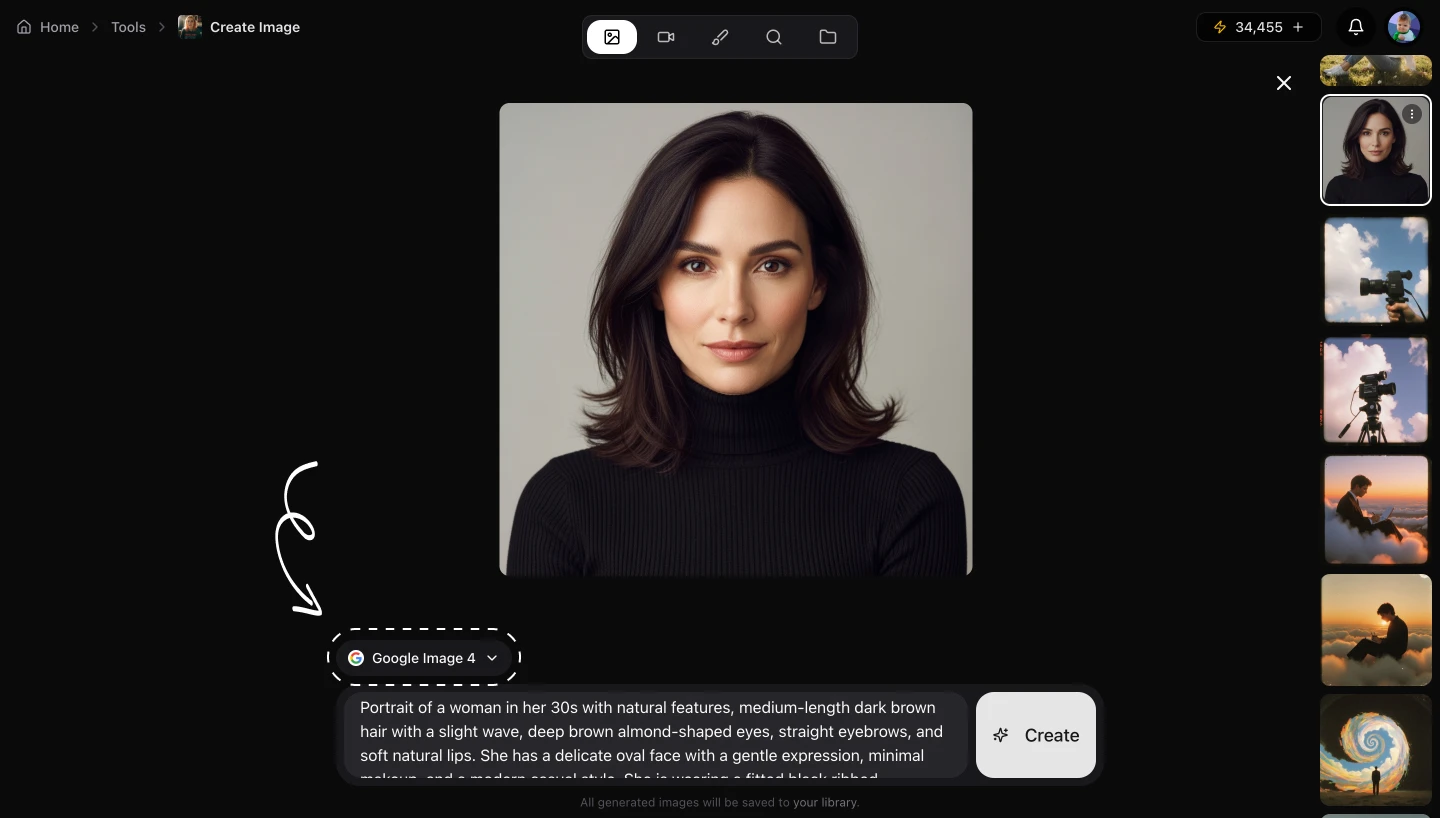
Now that we have the initial photograph, we can start creating other images maintaining the composition of the character.
2. Create the dataset with Nano Banana and Qwen.
Using our tool Edit Image, we are going to choose first Nano Banana model, then the image you just did in the Create Image tool, and write something like:
This woman in an excited pose, very happy. This woman very sad, almost crying. This woman with a look of disbelief.
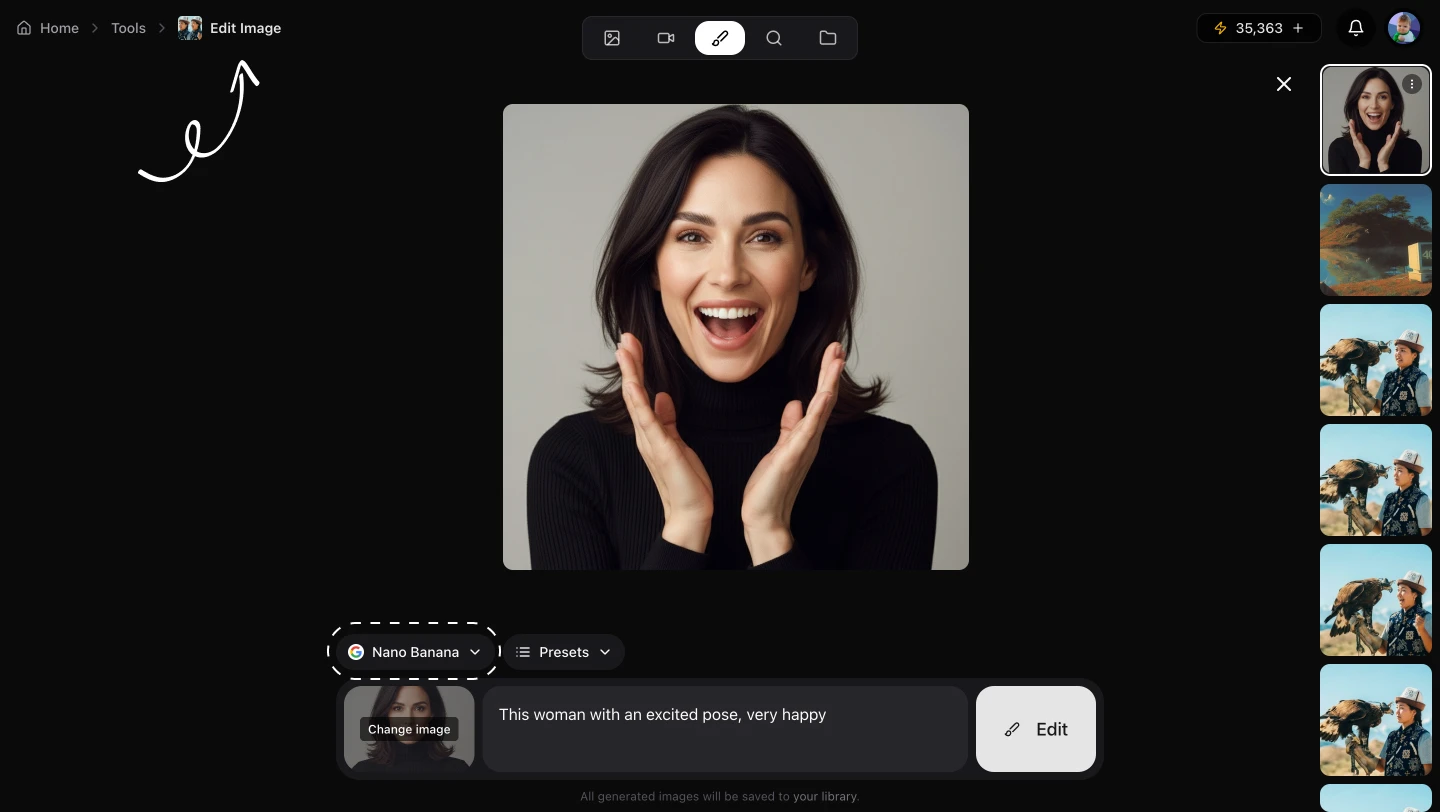
The more variations you create, the better.
You can also use the Qwen model to do crazy stuff like rotate a person by 90 degrees, showing her from behind, anything we want. Both models are really good for this, so our advice is use them and experiment because each has amazing results.
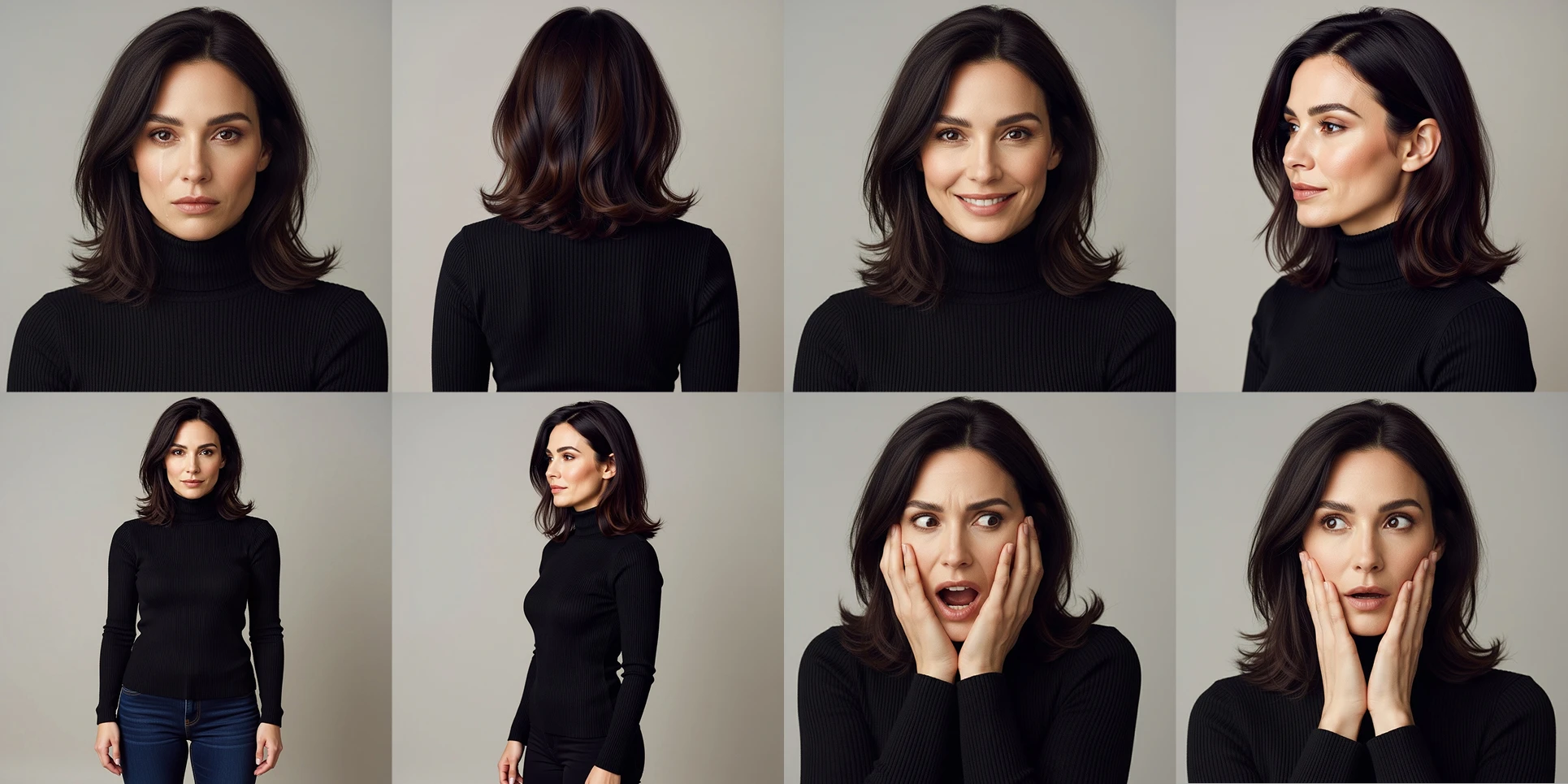
Below is showing examples like "obtain the side view", "obtain the back view", "Obtain the full body of this woman".
After you have some photos of her face, you are going to put her in different positions, doing different actions, like "This woman but sitting drinking a lemonade, preserve the identity of the woman, full body realistic photo", "This woman with a white shirt in a field with flowers, looking at the sun with her eyes close and a small smile, preserve the identity of the woman, realistic photo"
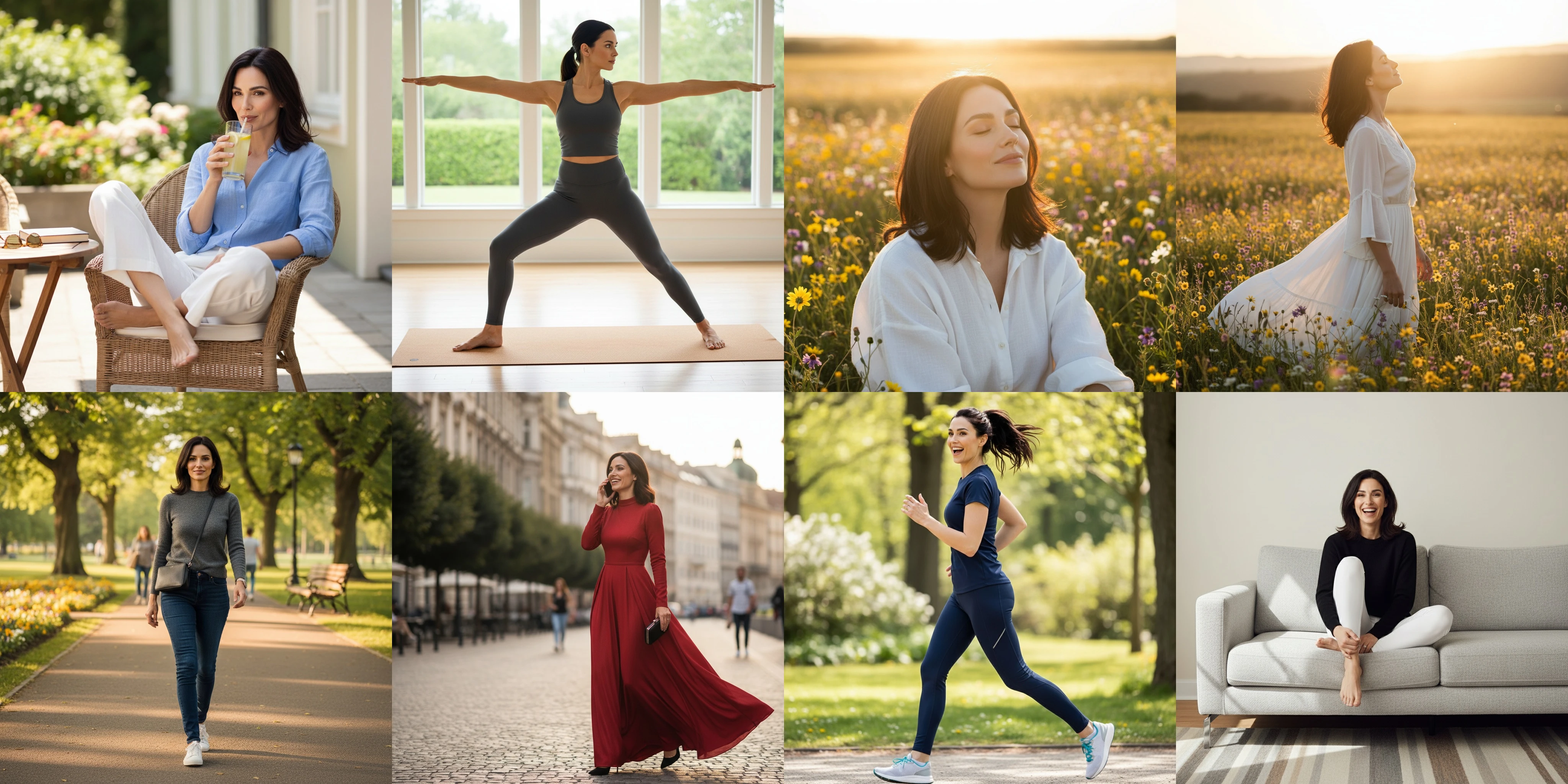
In different positions and expressions, your dataset should look something like this. The more photos you have, the better, because a model trained on multiple perspectives produces more consistent results. Think of this as your photoshoot.

Step 2: Train Your Custom Model
3. With a dataset in hand, it’s time to move into Train Model inside Artificial Studio.
This tool takes your curated images and learns the unique features of your virtual influencer: her face, style, and overall look.

It is super easy to train a model, you just need to click “Start Training” first and then choose what type of model you want: Style, object or character. After that you can upload your prepared images: 20–40 high-quality images of your character (JPG, PNG or WebP). The more the better. Avoid watermarks, text, or blurry pictures.

After uploading our dataset, we kicked off the training process. Within minutes, Artificial Studio delivered a fully trained model of our character. In this case we named to our character "Virtual Influencer".
From this point forward, you can generate unlimited images of the same influencer, in any context you want.
- Wearing a brand’s latest fashion line
- Traveling through Paris or New York
- Sitting in a modern office for a LinkedIn campaign
Here are some examples made with the already train model!:
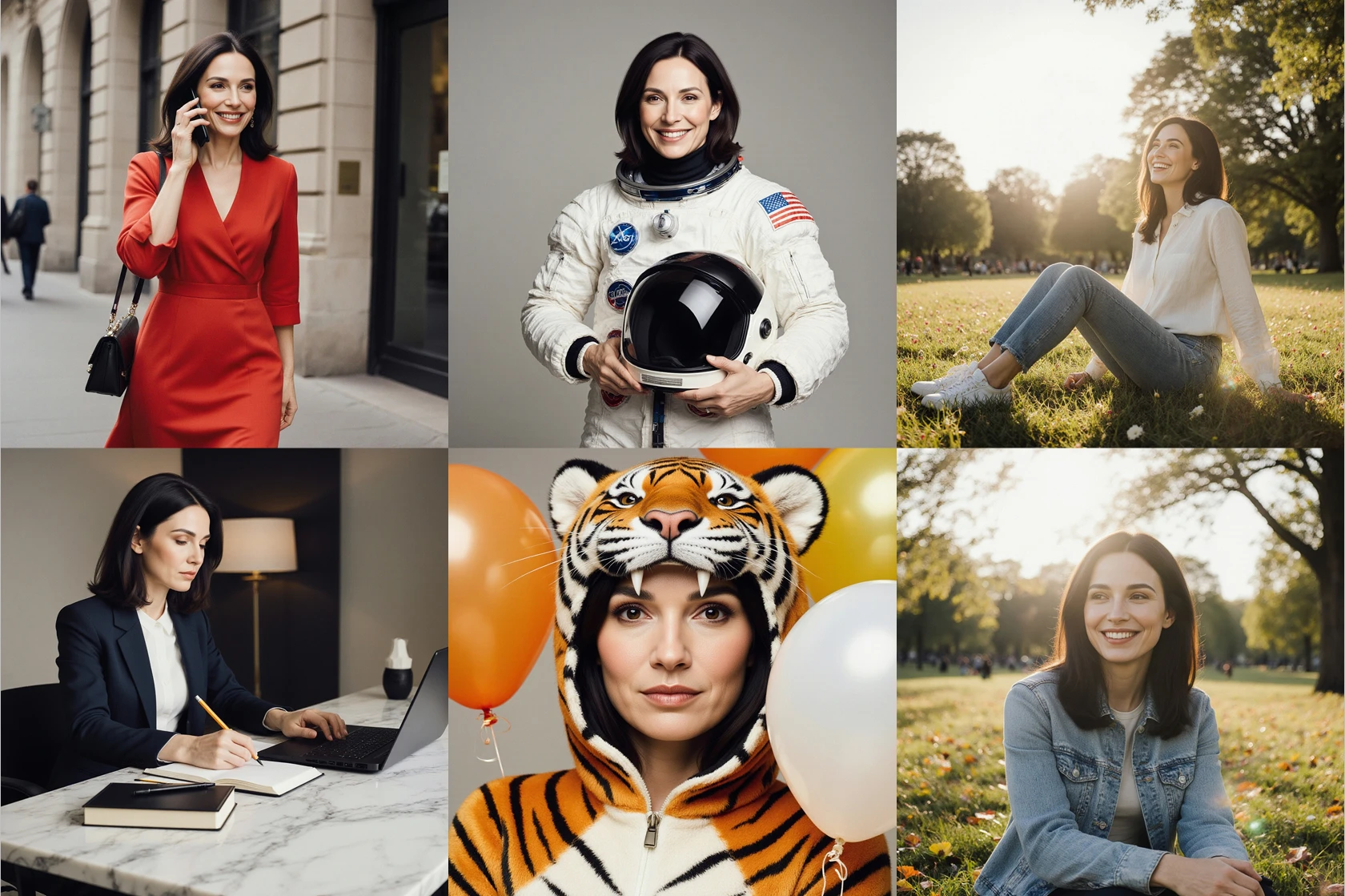
Step 3: Animate your Influencer with AI video tools
4. Artificial Studio has a tool called Animate Image with different amazing AI animation models like Google Veo 2, Minimax, Kling 1.6 and more.
We took a few of our generated images and turned them into short, dynamic clips: walking, talking, or simply posing for a product showcase. This step transforms your AI character into a virtual influencer capable of starring in campaigns, reels, or TikTok ads.
In this tool you can choose any model you want, one of the best so far is Google Veo 3, but we are going to try a normal and cheap one like Kling 1.6 Pro, to show you the amazing results it gives.
For example we choose the image we created with the trained model of the woman as an astronaut, and wrote this prompt: "This astronaut woman is smiling with proud, and then smiles gently looking down and then up, very proud of herself, while the camera zooms in"
Look at those results! What’s powerful here isn’t just the technology, it’s the end-to-end simplicity. Instead of juggling multiple platforms, in Artificial Studio you can:
- Generate your dataset (Nano Banana).
- Train your model (Train Model).
- Animate your influencer (Google Veo 3 or built-in animation tools).
All in one ecosystem. All without needing a data science background.
And also Artificial Studio let your product or service create content inside your own ecosystem with an API that gives you access to 50+ AI tools for any type of content generation.
This easy process it's great for Marketing agencies, so they can test multiple influencer looks before committing to a campaign, E-commerce brands can showcase fashion lines on consistent AI models, Content creators like youtubers can build entire personas without stepping in front of a camera.
Virtual influencers are no longer a futuristic concept, they’re a practical, affordable reality with Artificial Studio.
Ready to build your own Virtual Influencer?
This is just one workflow. Artificial Studio gives you access to 50+ AI tools for video, image, music, branding, marketing & more. Built for creators who move fast.
Related reading:
- Train your own AI model in Artificial Studio [Tutorial]
- Train custom AI models online – styles, characters & objects
- How to build an AI powered Marketing Campaign (12 tools)
- How to create product advertisements with AI & automate your marketing workflows
- 30 best AI marketing tools I'm using to get ahead in 2025

